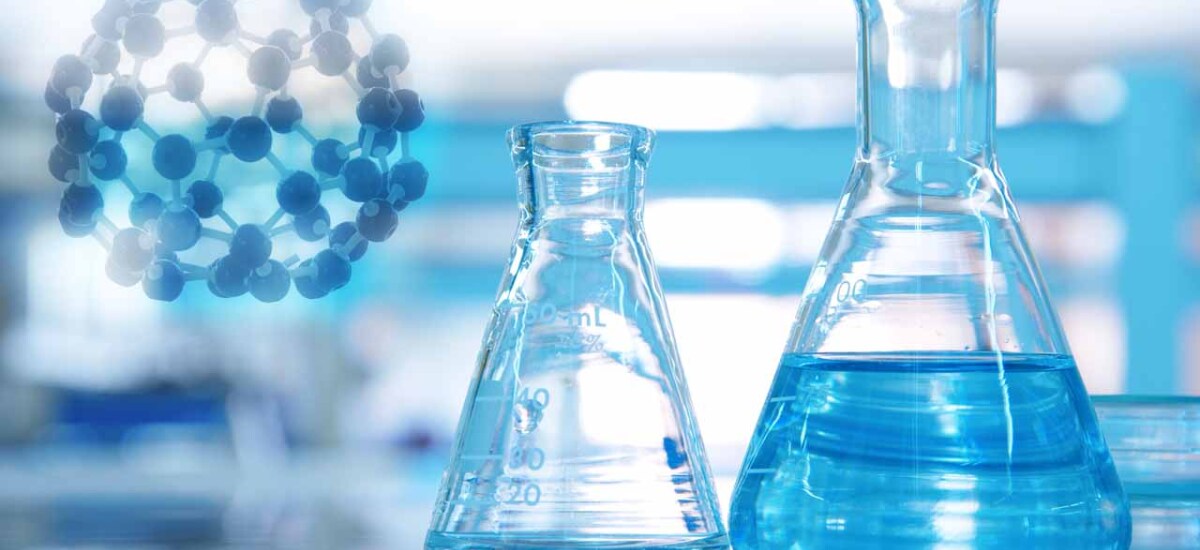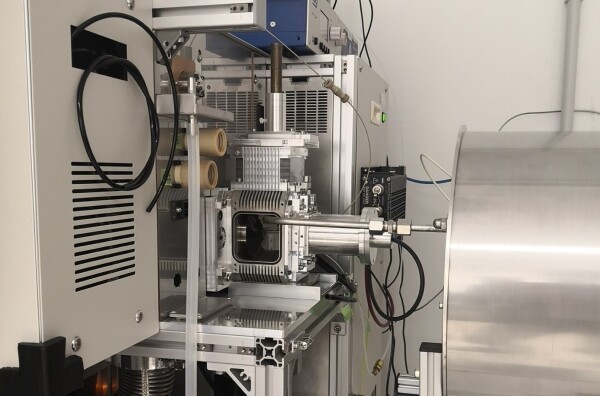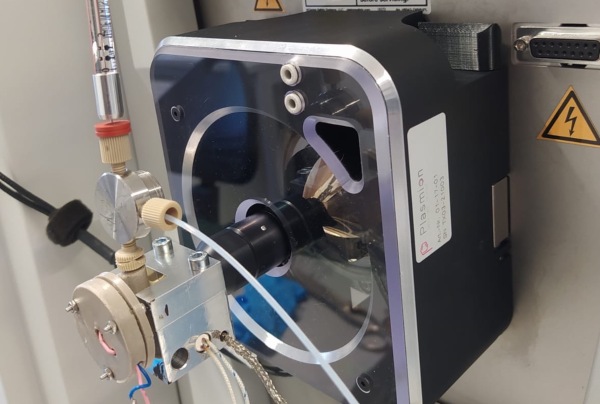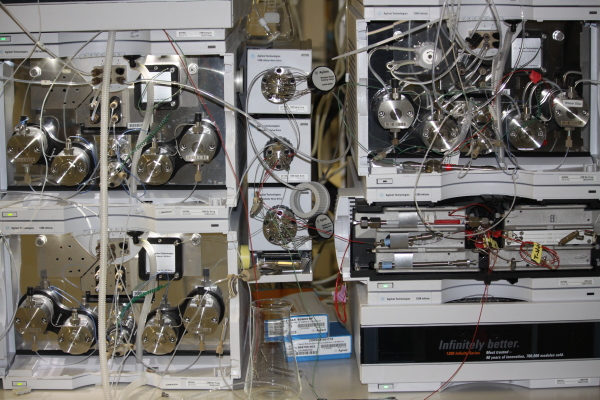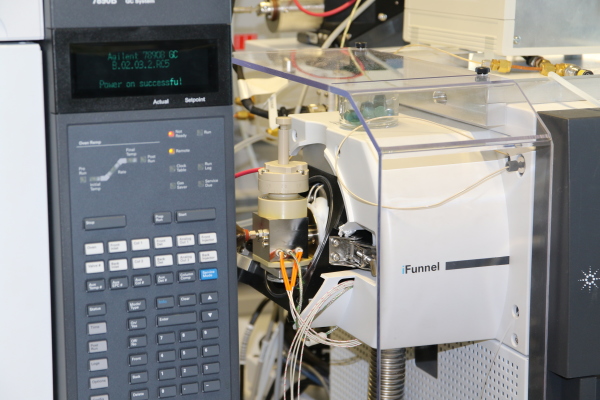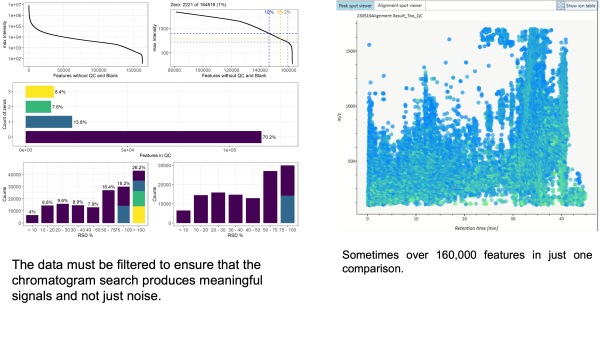RESEARCH
The Applied Analytical Chemistry research group focuses on the analysis of complex samples. Our current objective is to establish a four-dimensional analytical platform that integrates multidimensional chromatography with ion mobility–mass spectrometry (IM–MS) coupling, thereby achieving maximum separation efficiency. The goal is to resolve as many sample components as possible (>1,000) within a chromatographic system based on their functional groups, followed by an additional separation according to the analytes’ size and mass. This approach will enable the analysis of tens of thousands of analytes within a single sample in less than one hour.
The evaluation of data from such complex samples presents a considerable challenge. To address this, we are developing a software-assisted data processing workflow, supported by in-house programs written in Python and R. These tools are also employed in our metabolomic and lipidomic studies within the field of cancer research, where we collaborate with both national and international partners to gain a deeper understanding of tumor cell metastasis, among other processes.
In addition, we investigate the mechanisms underlying the resistance of certain tumor cells to chemotherapy, despite the susceptibility of most others. To explore this phenomenon, we are developing a single-cell ion source that, when coupled to a mass spectrometer, allows for the metabolomic analysis of individual cells and the identification of metabolic differences between distinct tumor cell populations.
Despite its analytical power, mass spectrometric detection alone cannot distinguish between structural isomers such as glucose and fructose, as these isobars share identical molecular formulas but differ in structure. In single-cell experiments, chromatographic preseparation is not feasible, precluding the discrimination of isobaric compounds by mass spectrometry alone. Therefore, we are advancing the coupling of ion mobility spectrometry (IMS) with mass spectrometry (MS). In this setup, IMS separates ions based on their size-to-charge ratio, while MS separates them by mass-to-charge ratio. Since isobaric compounds differ in size and shape rather than mass, IM–MS systems can frequently overcome the limitations associated with the analysis of such compounds.
To ensure optimal transfer of analytes into MS or IM–MS instruments, efficient ionization is essential. Depending on their polarity, size, thermal stability, and functional groups, analytes require different ionization sources—each with inherent advantages and limitations. Consequently, we are continuously developing novel ion sources in pursuit of a universal solution: an “all-rounder” capable of efficiently ionizing a wide range of analytes without significant drawbacks.
In addition, we are developing suitable analytical platforms to address the challenges of the future, such as the transformation of petroleum-based chemistry toward a chemistry based on recycled feedstocks (e.g., plastic-derived oils, CO₂, etc.). Currently, in collaboration with industrial partners, we are working on the conversion of CO₂ and green hydrogen into kerosene. The resulting product mixture requires comprehensive analytical characterization in order to optimize the production process.
PROJECTS
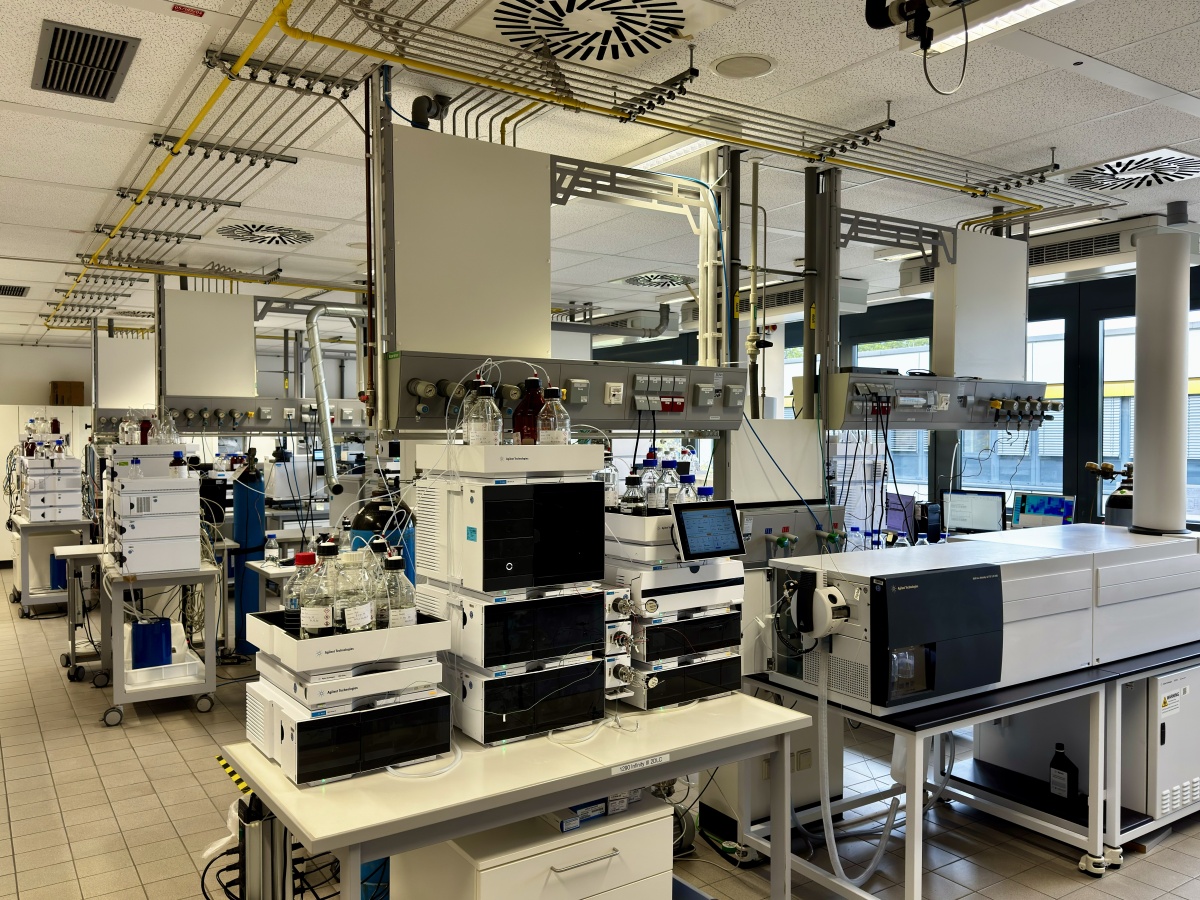
Our Laboratory Equipment
Our lab features modern, high-quality instruments to ensure reliable results. Further information and technical details can be found at the link below.


